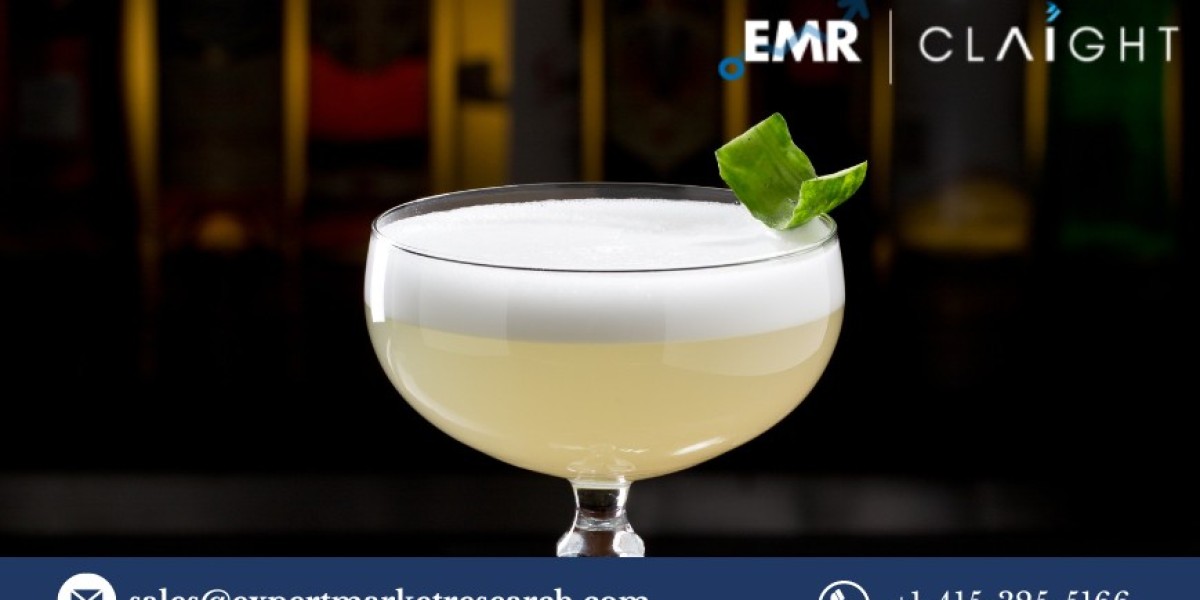The global Pisco market, valued at over USD 667.72 million in 2023, is projected to experience a growth rate of 6% CAGR from 2024 to 2032, reaching an impressive USD 1,128.10 million by 2032. This vibrant growth is spurred by an increasing global interest in artisanal spirits and the unique heritage of Pisco, a brandy distilled from fermented grape juices, which has carved out a prominent place in the beverage industry.
Let’s delve into the key factors contributing to this growth, explore market segmentation, and understand the competitive landscape that defines the global Pisco market.
Understanding Pisco: A Unique Heritage Spirit
Pisco, often likened to tequila for its semi-sweet or dry grape and earthy flavors, is an alcoholic beverage derived from grape juice distillation. While it is a type of brandy, Pisco differs in that it is usually unaged, retaining the natural flavor of the grapes used in its creation. With a history rooted in South America’s colonial era, Pisco has become synonymous with Peru and Chile, where it’s the base for the iconic Pisco Sour cocktail.
The Pisco Production Process:
- Grape Selection: The process begins with specific grape varieties, both aromatic and non-aromatic, chosen for their unique flavor profiles.
- Fermentation and Distillation: Grapes are fermented into wine, which is then distilled, typically in copper pot stills.
- Unaged Character: Unlike other brandies, Pisco is not aged in wood barrels, allowing the distinct flavors of the grape to shine.
Key Trends in the Global Pisco Market
1. Rising Demand for Artisanal and Craft Spirits
The demand for craft spirits is driven by consumers who appreciate traditional methods of production, such as those used for Pisco. Craft and artisanal qualities associated with Pisco resonate with the modern consumer, who values a connection to heritage and authenticity in their spirits.
The global cocktail renaissance has spurred the popularity of pisco-based cocktails, such as the Pisco Sour, which has significantly raised consumer awareness about Pisco worldwide. The spirit’s versatility allows it to adapt well to the modern cocktail scene, making it a popular choice among mixologists seeking to create innovative drinks.
2. A Growing Interest in Exotic Flavors
The market is witnessing an increasing interest in exotic and unique spirits, especially among younger consumers. This demographic is keen on exploring new taste profiles and cultural experiences, often preferring to drink less but with an emphasis on quality and uniqueness.
3. Shift Toward Craft and Premium Spirits
The trend of choosing high-quality, small-batch spirits has led to an increased demand for Pisco. As consumers seek spirits with a story, Pisco’s rich heritage and authentic production methods make it an attractive choice. Small-batch Pisco, in particular, is perceived as exclusive, adding to its appeal as a premium beverage.
Market Segmentation of the Pisco Market
1. By Type:
- Puro: Made from a single grape variety, Puro offers a unique taste experience that emphasizes the distinct characteristics of the grape. This type is highly favored among enthusiasts who appreciate high-quality, single-variety spirits.
- Acholado: A blend of several grape varieties, Acholado captures a complex flavor profile that continues to be popular, particularly among millennials.
- Mosto Verde: This type is distilled before the fermentation process is complete, resulting in a smoother and fruitier flavor.
2. By Origin:
- Peruvian Pisco: Known for its strong cultural roots, Peruvian Pisco follows strict production guidelines. Its popularity continues to grow, especially as consumers become more interested in spirits with authentic heritage.
- Chilean Pisco: Favored for its unique production environment, Chilean Pisco benefits from the country’s semi-arid climate, which enables the growth of high-quality grapes.
3. By Distribution Channel:
- Hypermarkets and Supermarkets: These channels offer a wide selection and the convenience of accessibility, catering to a broader consumer base.
- Specialty Stores: Specialty stores attract customers seeking high-quality and unique spirits, providing a more curated shopping experience.
- Online: E-commerce platforms have gained traction, especially among younger consumers, allowing brands to reach a global audience more efficiently.
4. By Region:
- North America: With an expanding interest in craft spirits, the North American market has become increasingly receptive to Pisco, particularly in the United States.
- Europe: Known for its sophisticated spirits market, Europe presents opportunities for growth, especially in countries like Spain, where Pisco’s unique flavors are gaining popularity.
- Asia Pacific: As cultural exchange continues to rise, the demand for diverse alcoholic beverages is growing in the Asia Pacific region.
- Latin America: As the birthplace of Pisco, Latin America remains a core market, with Peru and Chile leading in production and consumption.
- Middle East and Africa: Although currently a smaller market, there is potential for growth as awareness of Pisco increases.
Competitive Landscape and Key Players
The Pisco market features a mix of local brands with deep-rooted cultural significance and international companies that are expanding Pisco’s reach to global consumers. Here are some of the key players:
1. Agroproductos Bauzá y Cía
Founded in 1947, this Chilean company combines agricultural production with traditional distillation techniques to produce high-quality Pisco. The company’s focus on local and sustainable production practices has helped it maintain a strong position in the market.
2. Macchu Pisco
Macchu Pisco is renowned for its dedication to quality and tradition. Founded by two sisters, the company produces Pisco using 100% natural methods, showcasing herbal, grassy, and earthy notes. Macchu Pisco’s commitment to authenticity has resonated with consumers seeking an artisanal spirit with rich cultural ties.
3. Perola GmbH
Based in Germany, Perola GmbH markets and distributes Pisco and other premium spirits. Known for its focus on quality, the company imports a variety of spirits, making Pisco more accessible to the European market.
4. PiscoLogía & Topa Spirits
This company represents the blend of traditional Pisco production with modern branding, appealing to a global audience. PiscoLogía offers a range of Pisco varieties that emphasize both heritage and quality, helping to raise awareness of the spirit outside of South America.
5. Caravedo Piscos
One of the oldest Pisco producers, Caravedo continues to lead the market with a diverse product line. The company emphasizes the use of high-quality grapes and sustainable production methods, appealing to modern consumers who prioritize environmental responsibility in their purchasing decisions.
Pisco Market Analysis: A Focus on Chilean and Peruvian Varieties
Chilean Pisco benefits from a climate that encourages grape growth, resulting in higher sugar content, which enhances fermentation and flavor. The distinctiveness of Chilean Pisco, with its semi-arid and humid conditions, allows for a distinct sweetness that continues to grow in popularity globally.
Meanwhile, Peruvian Pisco is celebrated for its adherence to traditional methods. Types such as Acholado, which involve blending several grape varieties, offer consumers a unique flavor experience that distinguishes Peruvian Pisco from other spirits.
Acholado’s Market Appeal: With its balanced flavor profile, Acholado is especially popular among younger consumers who seek out aromatic and full-bodied spirits. Its production process, which involves fermenting each grape variety separately, results in a harmonious blend that appeals to a sophisticated palate.
Rising Demand for Puro Pisco: Connoisseurs who value high-quality spirits often gravitate toward Puro Pisco. Made from a single grape variety, Puro Pisco allows consumers to appreciate the nuances of individual grape types, making it an ideal choice for those who prefer single-variety beverages.
Future Outlook for the Global Pisco Market
The global Pisco market is poised for significant growth as consumers worldwide continue to explore artisanal spirits with strong cultural identities. The popularity of Pisco-based cocktails in the modern mixology scene has boosted the spirit’s visibility, while the growing craft spirit movement has amplified demand for unique and authentic products.
With increasing interest from regions like North America, Europe, and Asia Pacific, the Pisco market is set to benefit from rising global appreciation for this iconic South American beverage. As brands continue to leverage online platforms and engage with consumers through innovative marketing strategies, the future of the Pisco market looks promising.
Read More Reports:
https://www.expertmarketresearch.com/reports/digital-education-market
https://www.expertmarketresearch.com/reports/gamification-market/market-size
https://www.expertmarketresearch.com/reports/asset-management-market








